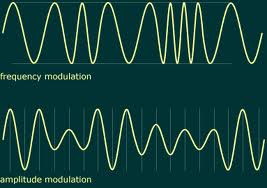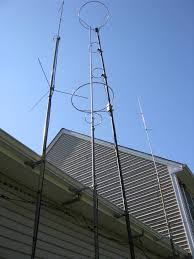Products Category
- FM Transmitter
- 0-50w 50w-1000w 2kw-10kw 10kw+
- TV Transmitter
- 0-50w 50-1kw 2kw-10kw
- FM Antenna
- TV Antenna
- Antenna Accessory
- Cable Connector Power Splitter Dummy Load
- RF Transistor
- Power Supply
- Audio Equipments
- DTV Front End Equipment
- Link System
- STL system Microwave Link system
- FM Radio
- Power Meter
- Other Products
- Special for Coronavirus
Products Tags
Fmuser Sites
- es.fmuser.net
- it.fmuser.net
- fr.fmuser.net
- de.fmuser.net
- af.fmuser.net ->Afrikaans
- sq.fmuser.net ->Albanian
- ar.fmuser.net ->Arabic
- hy.fmuser.net ->Armenian
- az.fmuser.net ->Azerbaijani
- eu.fmuser.net ->Basque
- be.fmuser.net ->Belarusian
- bg.fmuser.net ->Bulgarian
- ca.fmuser.net ->Catalan
- zh-CN.fmuser.net ->Chinese (Simplified)
- zh-TW.fmuser.net ->Chinese (Traditional)
- hr.fmuser.net ->Croatian
- cs.fmuser.net ->Czech
- da.fmuser.net ->Danish
- nl.fmuser.net ->Dutch
- et.fmuser.net ->Estonian
- tl.fmuser.net ->Filipino
- fi.fmuser.net ->Finnish
- fr.fmuser.net ->French
- gl.fmuser.net ->Galician
- ka.fmuser.net ->Georgian
- de.fmuser.net ->German
- el.fmuser.net ->Greek
- ht.fmuser.net ->Haitian Creole
- iw.fmuser.net ->Hebrew
- hi.fmuser.net ->Hindi
- hu.fmuser.net ->Hungarian
- is.fmuser.net ->Icelandic
- id.fmuser.net ->Indonesian
- ga.fmuser.net ->Irish
- it.fmuser.net ->Italian
- ja.fmuser.net ->Japanese
- ko.fmuser.net ->Korean
- lv.fmuser.net ->Latvian
- lt.fmuser.net ->Lithuanian
- mk.fmuser.net ->Macedonian
- ms.fmuser.net ->Malay
- mt.fmuser.net ->Maltese
- no.fmuser.net ->Norwegian
- fa.fmuser.net ->Persian
- pl.fmuser.net ->Polish
- pt.fmuser.net ->Portuguese
- ro.fmuser.net ->Romanian
- ru.fmuser.net ->Russian
- sr.fmuser.net ->Serbian
- sk.fmuser.net ->Slovak
- sl.fmuser.net ->Slovenian
- es.fmuser.net ->Spanish
- sw.fmuser.net ->Swahili
- sv.fmuser.net ->Swedish
- th.fmuser.net ->Thai
- tr.fmuser.net ->Turkish
- uk.fmuser.net ->Ukrainian
- ur.fmuser.net ->Urdu
- vi.fmuser.net ->Vietnamese
- cy.fmuser.net ->Welsh
- yi.fmuser.net ->Yiddish
-
How to Build a RF Transmitter Receiver
Radio frequencies constantly saturate the air around us, carrying signals that broadcast music, information and controls for electronics and toys. You can build a simple receiver that will pick up the signal coming from a radio frequency, or RF, transmitter. Otherwise known as a radio, the receiver
 Posted on:02-28 View:1159
Posted on:02-28 View:1159 -
RF Wireless Technology
A radio frequency (RF) signal refers to a wireless electromagnetic signal used as a form of communication, if one is discussing wireless electronics. Radio waves are a form of electromagnetic radiation with identified radio frequencies that range from 3Hz to 300 GHz. Frequency refers to the rate of
Posted on:02-28 View:585 -
How to Calculate Wavelength of Antennas
The simplest antennas are straight, long pieces of wire. A dipole antenna takes the concept a little further, using two pieces of wire held together in the middle by an insulator. You can calculate the range of wavelengths for a dipole antenna with a simple formula. The antenna is sensitive to a ba
 Posted on:02-27 View:2935
Posted on:02-27 View:2935 -
Global broadcast and standardisation
The International Standardization of broadcasting: transition to digital, on-demand content services and the like are markers of gradual developments that the media sector have been witnessing for quite some time now, more rapidly so in developing countries where cutting-edge technology has seeped
 Posted on:02-27 View:206
Posted on:02-27 View:206 -
How to Strengthen FM Radio Reception
If you're familiar with fixing your TV's reception, you'll be a natural with an FM radio. FM reception is affected by the same things that affect television signal reception--the quality of your antenna, the strength of the signal you're trying to receive, and any obstacles b
 Posted on:02-26 View:7845
Posted on:02-26 View:7845 -
Instructions to Build FM Radio Transmitters
Though modern commercial FM radio stations utilize more sophisticated and advanced means of broadcasting than they did in the past, the most basic concepts can still be used to create a working transmitter. In an FM broadcast, the amplitude of the signal remains constant while its frequency vari
 Posted on:02-26 View:1092
Posted on:02-26 View:1092 -
Radio Waves: AM Vs. FM
Whether you are listening to the radio, watching television, cooking dinner in a microwave or having an x-ray taken, you are dealing with electromagnetic waves. AM and FM waves are among the lower frequencies of electromagnetic waves, while x-rays and gamma rays rank among the highest.
 Posted on:02-25 View:3154
Posted on:02-25 View:3154 -
How to Build a Low Power FM 10 Radio Station
Low-power FM radio stations, also known as LPFMs, are only available to noncommercial / nonprofit radio broadcasters. LPFM radio stations have a maximum broadcast power of 100 watts. L2 class (which are referred to as LP10) LPFM stations have a broadcast capacity of between one and 10 watts. While
 Posted on:02-25 View:1948
Posted on:02-25 View:1948 -
Broadcast VHF FM Tutorial & Basics
- Details or tutorial about VHF FM broadcasting signals and single formats VHF broadcasting is established in most countries around the globe. VHF broadcast technology provides excellent fidelity in terms of audio frequency response and background noise of all forms. As a resul
 Posted on:02-24 View:332
Posted on:02-24 View:332 -
How to Broadcast Over FM Radio
Perhaps you're an aspiring media mogul or maybe just want to start a neighborhood news service. Broadcasting over FM radio can be done on a variety of levels involving different equipment and government licenses based on your signal strength and location. Commercial and nonprofit educational b
 Posted on:02-24 View:681
Posted on:02-24 View:681





